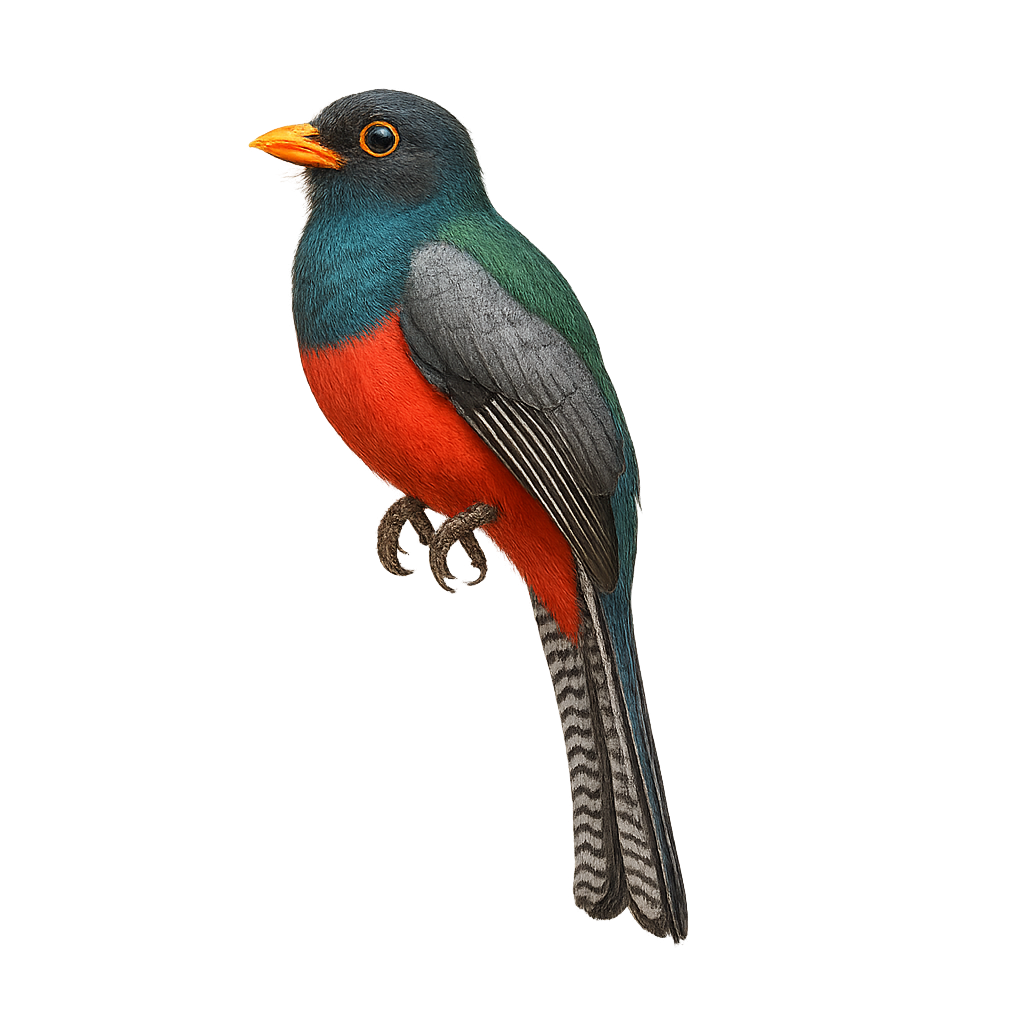Your wildlife photography guide.
Explore the lattice-tailed trogon in detail, study its behavior, prepare your shots.
Where to observe and photograph the lattice-tailed trogon in the wild
Learn where and when to spot the lattice-tailed trogon in the wild, how to identify the species based on distinctive features, and what natural environments it inhabits. The WildlifePhotographer app offers tailored photography tips that reflect the lattice-tailed trogon’s behavior, helping you capture better wildlife images. Explore the full species profile for key information including description, habitat, active periods, and approach techniques.
Lattice-tailed Trogon
Scientific name: Trogon clathratus

IUCN Status: Least Concern
Family: TROGONIDAE
Group: Birds
Sensitivity to human approach: Suspicious
Minimum approach distance: 10 m
Courtship display: March to April
Incubation: 17-19 jours
Hatchings: March to May
Habitat:
Humid forests, tropical forests, dense woodlands
Activity period :
Primarily active during the day, with peak activity in the morning and late afternoon.
Identification and description:
The Lattice-tailed Trogon is a captivating bird found in the humid forests of Central America, primarily in Costa Rica and Panama. It is distinguished by its vibrant plumage, featuring emerald green on the back and a bright red belly. Its tail, adorned with lattice-like patterns, gives it its distinctive name. This bird prefers dense habitats where it can blend into the foliage. Often seen perched silently, it patiently waits to catch insects or small fruits. Although discreet, its melodious call echoes through the canopy, signaling its presence to attentive observers.
Recommended lens:
400mm – adjust based on distance, desired framing (portrait or habitat), and approach conditions.
Photography tips:
To photograph the Lattice-tailed Trogon, it's advisable to use a telephoto lens of at least 400mm to capture detailed images without disturbing the bird. Look for it in dense forests where it blends into the foliage. Be patient and listen for its distinctive call to locate its position. The natural light of the morning or afternoon is ideal for highlighting the vibrant colors of its plumage. Use a tripod to stabilize your camera and achieve sharp images.
The WildlifePhotographer App is coming soon!
Be the first to explore the best nature spots, track rutting seasons, log your observations, and observe more wildlife.
Already 1 432 wildlife lovers subscribed worldwide

